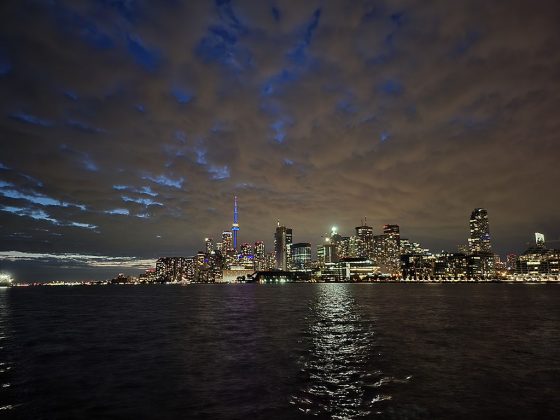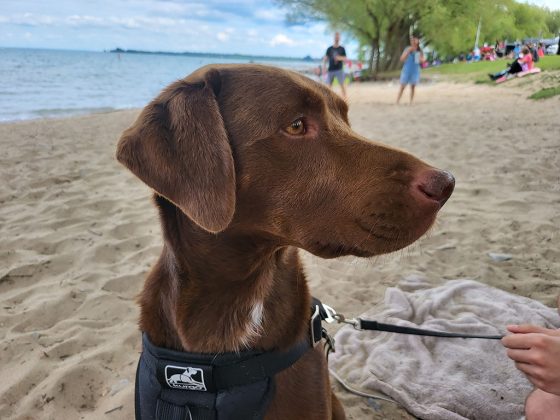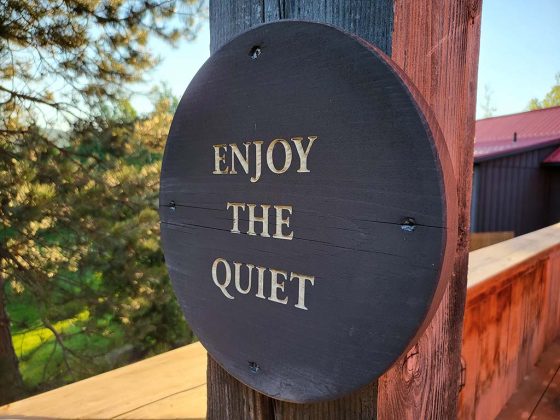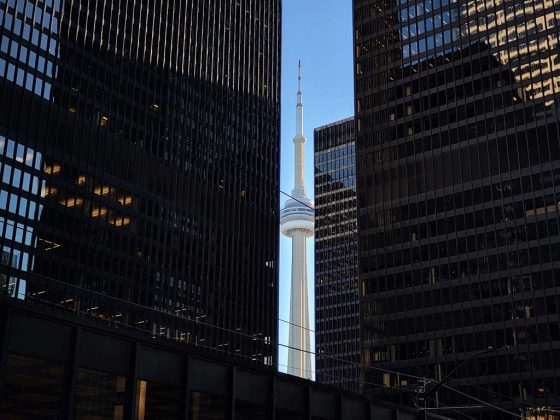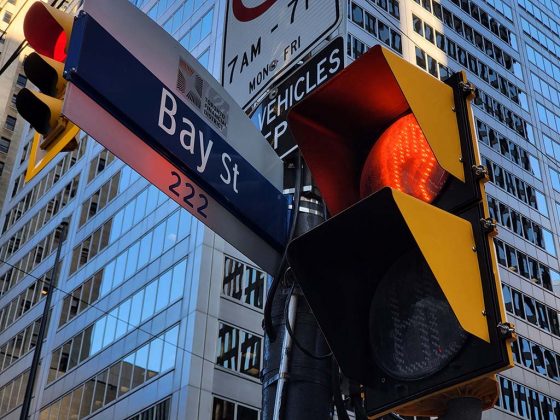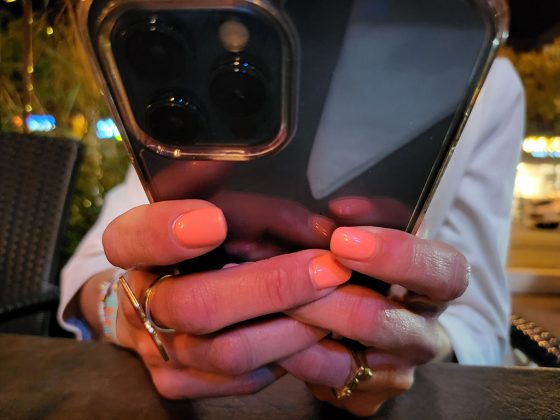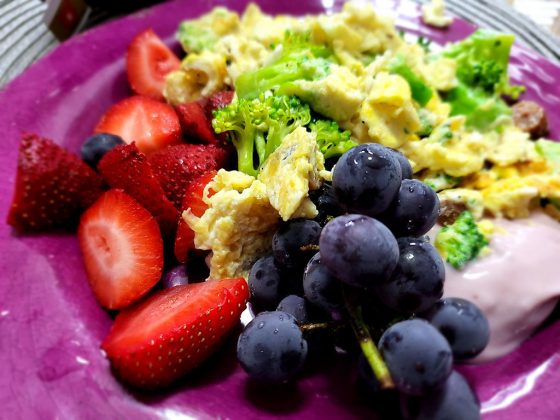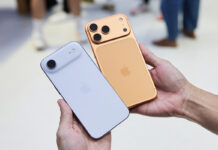
It isn’t really a matter of whether you need the Samsung Galaxy Z Fold3, it comes down to whether or not you want the unusual experience it gives you. It’s not out of the ordinary to look at this phone from a different perspective. That is, in many ways, the point Samsung is trying to make anyway.
Foldable phones will likely become a bigger part of future mobile devices. And not just phones, but tablets, too. The Galaxy Z Fold3 is a more polished version of Samsung’s vision that started two years ago. At that time, the original Fold met with an aborted launch, only to then come out with limited availability, given its high price.
The Galaxy Z Fold3 is not cheap to purchase, but it is more well thought out this time. It’s just a question of whether this is the Samsung foldable you truly want in your hands.
Samsung Galaxy Z Fold3 SpecsDisplay: (Unfolded) 7.6-inch 2208 x 1768 Infinity Flex Dynamic AMOLED display with 374 pixels per inch (Folded) 6.2-inch 2268 x 832 Dynamic AMOLED with 387 pixels per inch |
The Galaxy Z Fold3 ‘folded’ in or out
Is this a phone or a tablet? Why not both? When I showed the device to people I knew, their first reaction was less awe and more intrigue over what the larger inner display could do. A 7.6-inch Dynamic AMOLED is a nice canvas to work and play with, and that’s what this device offers when you fold it out. Close it up, and you still have an excellent 6.2-inch Dynamic AMOLED to work with as the “Cover” display.
But you’re then dealing with a phone considerably thicker and heavier than your average handset. Innovation often comes with compromises, and the design here has a fair bit of that. For example, the Fold3 is thinner and lighter than its predecessor, yet you would probably want to put it in a case for protection, adding girth and heft. It supports the S Pen, which is great, but you would need somewhere to put it. If you’re going to take a call while it’s folded out, you may have to close it shut to better wield it. And even then, you don’t have the full folded-out screen available to you—unless you use Bluetooth or the speaker.
I’m only citing a few examples, but I point them out because they’re intrinsically connected to the design. The larger display has a noticeable crease running across the middle. It is definitely better glass this time, given how smooth it feels to swipe on it. Nor can I complain about the 120Hz refresh rate Samsung brought over from its other phones. Navigate on either screen, and it all feels seamless.
Samsung even managed to disguise the front-facing camera on the larger screen. It blends in so well that you often won’t notice it, even while it’s on and looking at you during a video call.

Building safety
Samsung wisely added stronger water resistance to the Fold3. That suits the device well, considering that its overall construction is also nicely done. From the hinge, and on to the metal surrounding the device, it’s objectively good craftsmanship. But, as I noted earlier, it has a fragile side, too. This is an expensive phone to accidentally drop, and the cost to replace either screen is probably not something you want to deal with. For that reason, I advise investing in a case, and holding the device with extra care.
Naturally, when you have something this unique, others will want their paws on it, too. I admit, I sometimes worried when I handed it off to friends or acquaintances—worried that they might mishandle it somehow. When I put it in my pocket or a bag, I wanted to make sure it didn’t make contact with anything else. It’s not so much the foldable display, but rather the Cover display.
Both screens are made of Gorilla Glass Victus, which is nothing to sneeze at. It’s so good, in fact, that you can write away with the S Pen, and not worry about scratching it with each stroke.
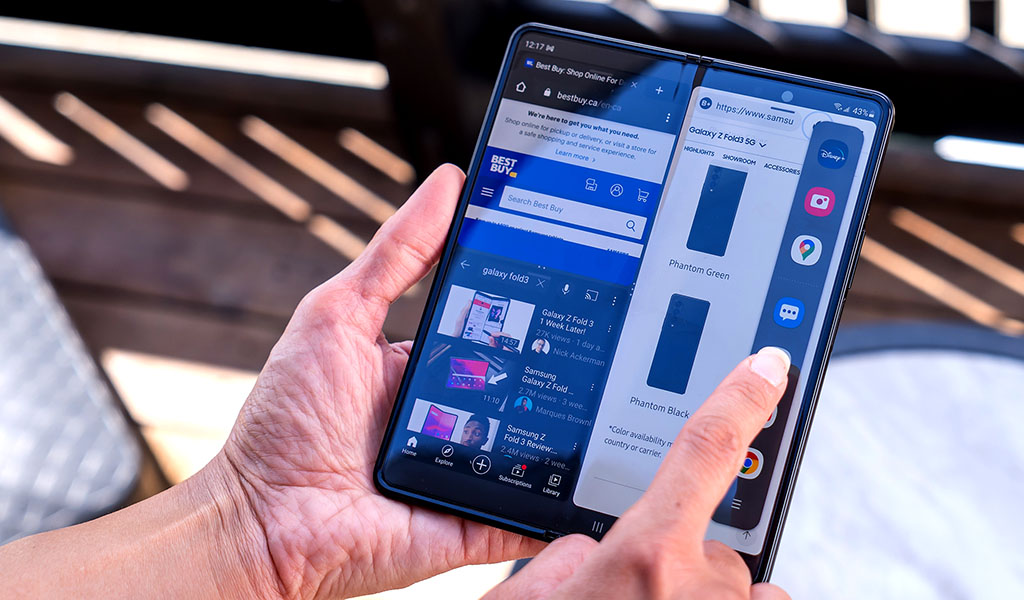
Performance and software of the Fold3
Here, too, Samsung did something right. First, it equipped the Fold3 with the Snapdragon 888, a higher-end chipset. Second, it offers 12GB of RAM and up to 512GB of internal storage. And lastly, it adjusted its own One UI overlay to make Android work better with the unique screen size.
One thing I never liked about the previous Fold devices was multitasking didn’t feel seamless. You could do it, sure, but mixing the apps together wasn’t simple enough. With the Fold3, Samsung finally puts the side menu to good use. Swipe in the pane from the right side and drag and drop apps into the screen. That’s it. It works even better once you really get the hang of it, and applies to pretty much any app you want to use.

You can do it with up to three apps at once. I was able to look up places on a map, read about them on a browser, and message a friend all on the same screen. If I wanted to do a split-screen setup, I just swiped up from the bottom and selected “Split-screen view” on the app in the multitasking screen. Personally, I liked that setup the most because it let me read from two different sources, or watch a sporting event and message someone about it at the same time.
Flex Mode is supposed to also make the larger screen more adaptive. I knew this from the previous Folds, and the idea, while nice, still needs support. For instance, I started a YouTube video, turned to landscape mode, fold the screen on a 45-degree angle and had the video playing at the top with an ability to navigate at the bottom. It’s cool, except no one else seems to care about it yet. I couldn’t replicate the experience with virtually any other video app.
And for apps to cover the whole of the main screen, you need only go to the Labs section under the settings and toggle that on. It forces all apps to display over the entire screen, even if they weren’t optimized to do it yet.
About the S Pen
Before you start thinking you can use the S Pen from a previous Galaxy device, think again. The Galaxy Z Fold3 is only compatible with two S Pen versions. You have the Fold Edition, which works exclusively with the device, yet lacks Bluetooth. Or you can use the new S Pen Pro, which is much bigger, but has Bluetooth. Bear in mind that the pen only works on the larger display. The Cover screen doesn’t support them at all.
Why would you need Bluetooth for the S Pen? Because that’s how you get Air Actions—like the feature where you can use the pen to snap photos remotely. Don’t fret too much about those. Samsung still needs to work on making them viable. As is, the Fold Edition is perfectly fine if your sole purpose is to write on the screen.

Galaxy Z Fold3 camera
Despite how premium the Galaxy Z Fold3 is, Samsung didn’t put its best cameras inside. It basically took image sensors from the Galaxy S21 and S21+ to form the triple camera array in the rear. They are capable cameras, so photos will look good. They just won’t look exceptional, considering how high-end this device is. If you are looking for the best Samsung can offer on the photography front, you’ll have to go for the Galaxy S21 Ultra instead.

You will find all of Samsung’s camera modes included here. And I will say that the Fold3’s design makes it useful to capture photos in ways other phones can’t. For example, because it folds, you can prop it up at almost any angle to shoot anything. Lay it down on a flat surface, point it, angle it, and then fire away. And if you like to use Pro or Night mode for low-light shots, you will find that doing it this way also helps deliver sharper images.
I also liked how the screen could split in two, letting me shoot on one side, while the other showed me a preview of what I just captured. That way, I could adjust my shot without having to go back and forth with the camera app.
The rear cameras also figure into selfies in their own way. Fold it open, point the rear camera at yourself, and the Cover screen will show you a live preview. Super easy to frame yourself or a group. The two front-facing cameras are also interesting. You only get a 4-megapixel shooter on the main screen, but that’s also the one that tries to stay hidden. I found it most useful for video calls, though even then, the Cover screen’s front camera was a noticeable improvement.
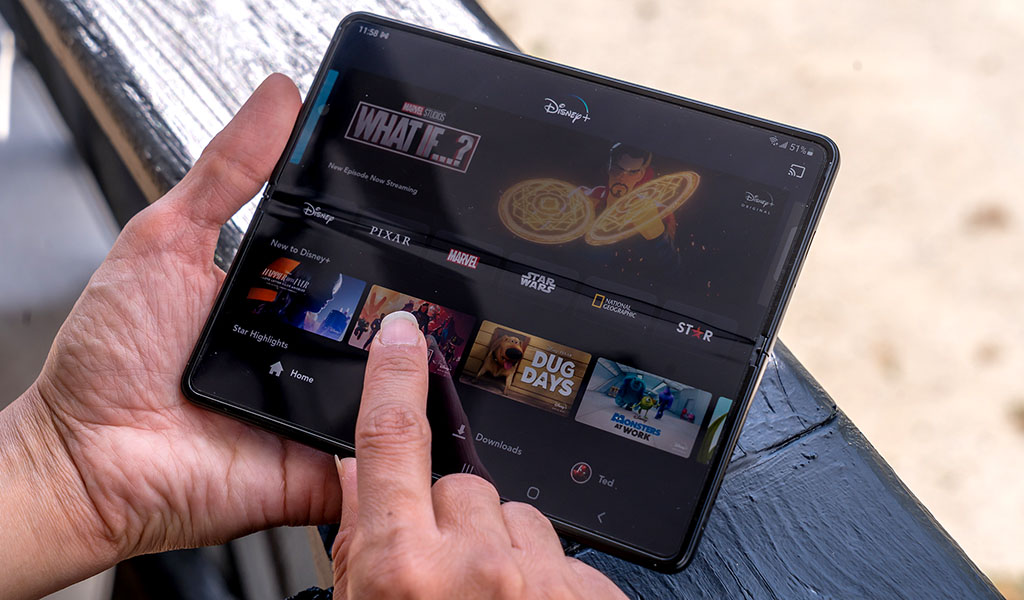
Galaxy Z Fold3 battery life
The battery is uniquely built as two pieces fused together to make up the total sum of 4400mAh. That’s cool, but don’t expect it to pull off a miracle. I found that with heavy usage, I had to charge the device by bedtime, sometimes even earlier than that. It does matter how much you use the main screen versus the Cover screen, but at the (literal) end of the day, you probably won’t have much juice left.
Video is a killer for the battery, much like the camera can be when shooting a lot of photos and footage. With the main screen essentially doing two things at once, it can sap it fairly easily. Multitasking can also have that effect. An understandable trade-off for a device like this, but also a warning that battery life isn’t going to be great.
5G connectivity
The Galaxy Z Fold3 works with 5G networks, and does so just fine. One thing to note, though, is that 5G is more of a drain on battery than LTE is. For a device that already has to work harder to do all the things it does, that’s another power wrinkle to think about.

Final thoughts on the Fold3
Samsung is committing to making phones fold. Above all, the Galaxy Z Fold3 is more of an experiment in fusing two devices (phone and tablet) into one concept. True, it’s not as big as tablets generally are today, but the extra screen real estate is still sizeable. It wasn’t that long ago that 7-inch screens were the norm for tablets.
The only thing is whether or not you really need anything the Fold3 does. To me, the Galaxy Z Flip3 is a more usable concept because it only alters a familiar design. It’s an ode to the flip phones of the past. Even for a young generation that doesn’t remember those, the Z Flip3 is still easier to grasp. The Z Fold3, on the other hand, is much more of an adjustment, even if it has come down in price.
The Samsung Galaxy Z Fold3 is available now in phantom black, phantom silver and phantom green.

